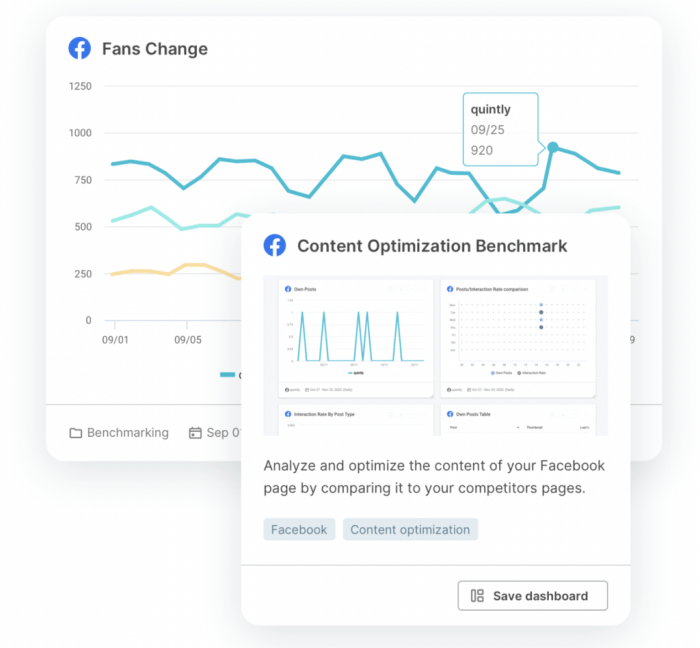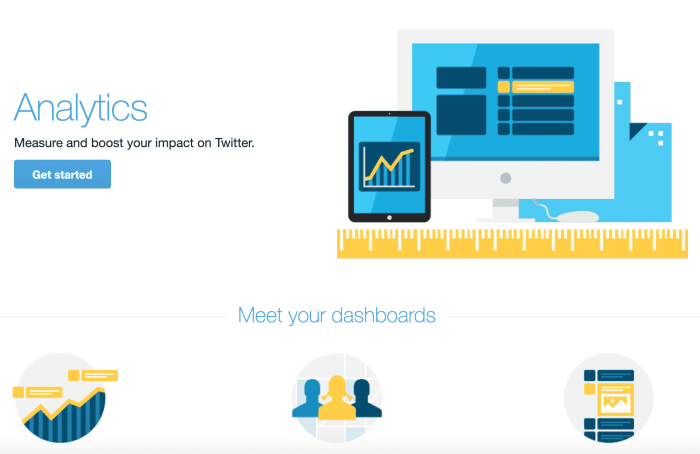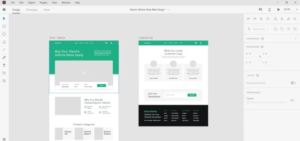
Social media analytics tools comparison sets the stage for this enthralling narrative, offering readers a glimpse into a story that is rich in detail and brimming with originality from the outset. These tools play a critical role in shaping digital marketing strategies, allowing businesses to decode vast amounts of social media data effectively. Understanding the key features, essential metrics, and best practices in integrating these tools can greatly enhance your marketing efforts.
In today’s fast-paced digital landscape, leveraging the right analytics tools can provide invaluable insights that help businesses track performance, engage audiences, and optimize campaigns across various social platforms. With a range of options available, knowing how to compare these tools becomes essential for any marketer aiming to stay ahead of the game.
Social Media Analytics Tools Overview

Social media analytics tools play a crucial role in digital marketing strategies, enabling businesses to track, measure, and optimize their social media performance. By leveraging these tools, marketers can gain valuable insights into audience behavior, content engagement, and overall campaign effectiveness. This data-driven approach not only enhances decision-making but also ensures that marketing efforts align closely with business objectives.Identifying the right social media analytics tool involves understanding the essential features that cater to your specific needs.
These tools provide a range of functionalities, from performance tracking to audience insights, and can significantly impact a brand’s online presence. When evaluating these tools, consider factors such as ease of use, integration capabilities, and the depth of analytics provided.
Key Features of Social Media Analytics Tools
When selecting a social media analytics tool, it’s important to prioritize features that will enhance your marketing efforts. Below are some of the key features to look for:
- Real-Time Analytics: The ability to monitor social media performance in real-time allows brands to make informed decisions quickly.
- Audience Insights: Tools that provide demographic data about followers help tailor content to meet audience preferences and improve engagement.
- Content Performance Tracking: Monitoring which posts perform best helps refine future content strategies for higher engagement rates.
- Competitor Analysis: Understanding how competitors are performing can reveal opportunities and threats in the market.
- Reporting Capabilities: Comprehensive reporting features that summarize data visually make it easier to communicate results to stakeholders.
Comparison of Popular Social Media Analytics Tools
There is a variety of social media analytics tools available, each offering unique functionalities and benefits. Here’s a comparison of some of the most widely used tools in the market:
| Tool | Key Features | Best For |
|---|---|---|
| Hootsuite | Social media scheduling, analytics dashboard, and content curation. | Brands looking for an all-in-one platform. |
| Sprout Social | In-depth reporting, engagement tracking, and customer relationship management (CRM). | Businesses aiming to enhance customer engagement. |
| Buffer | User-friendly interface, post-scheduling, and performance analytics. | Small businesses and startups requiring simple tools. |
| Google Analytics | Website and social media integration, traffic analysis, and conversion tracking. | Organizations focusing on website performance and social media impact. |
| Socialbakers | Content performance analysis, audience insights, and benchmarking. | Companies looking for strong competitor analysis capabilities. |
“Effective social media analytics tools are the backbone of successful digital marketing, providing the insights needed to navigate the complex landscape of online engagement.”
Metrics and KPIs in Social Media Analytics

Understanding the right metrics and KPIs (Key Performance Indicators) is crucial for businesses aiming to optimize their social media strategies. These metrics not only help in assessing the effectiveness of marketing efforts but also offer insights into audience engagement, brand awareness, and customer sentiment. By tracking the relevant data, businesses can make informed decisions that enhance their social media presence and drive growth.
Evaluating social media effectiveness involves measuring various aspects of online engagement and performance. Here are the essential metrics and KPIs that businesses should consistently monitor through their analytics tools:
Essential Social Media Metrics
Key metrics provide a comprehensive understanding of how social media efforts contribute to business goals. Tracking these metrics allows businesses to fine-tune their strategies for better engagement and reach.
- Engagement Rate: This metric tracks how users interact with your content through likes, comments, shares, and clicks. A higher engagement rate indicates that your content resonates well with your audience. Businesses can improve this by creating more engaging and relevant content tailored to their audience’s interests.
- Reach and Impressions: Reach refers to the number of unique users who see your content, while impressions count how many times content is displayed, regardless of clicks. Both metrics help gauge brand visibility. Strategies like promoting posts or collaborating with influencers can expand reach.
- Follower Growth Rate: Tracking how quickly your follower base is growing can indicate overall brand interest and effectiveness of outreach efforts. To improve this, businesses can run campaigns encouraging users to follow their accounts.
- Click-Through Rate (CTR): This metric measures the percentage of users who click on a link compared to the total users who viewed the post. A low CTR may suggest that your call-to-action needs more appeal; consider optimizing your headlines and visuals to drive more clicks.
- Conversion Rate: This metric tracks how many social media visitors complete a desired action, such as making a purchase or signing up for a newsletter. Analyzing conversion rates can identify which channels drive the most effective traffic, guiding budget allocations.
Interpreting Metrics for Strategy Improvement
Interpreting social media metrics is key to refining your marketing strategy. Each metric provides distinct insights that, when analyzed together, can inform your content and engagement strategies. It’s important to view these numbers in context and understand what they mean for your business.
“The goal is to understand the story behind the numbers rather than just memorizing them.”
For instance, if engagement rates are high but conversion rates are low, it could mean that while your content is engaging, it may not be effectively leading users toward desired actions. Consider A/B testing different types of content or adjusting your calls to action to encourage conversions. Furthermore, seasonal trends or specific campaigns might affect metrics, so it’s important to compare performance over time to discover patterns.
Best Practices for Reporting and Visualization
Setting up effective reports that visualize social media metrics can significantly enhance decision-making processes. Clear visualization of data makes it easier for teams to grasp insights quickly, enabling faster adjustments in strategy.
When creating reports, consider the following best practices:
- Use Dashboards: Employ social media analytics tools that offer customizable dashboards. This allows teams to view key metrics at a glance, facilitating immediate insights.
- Select Key Metrics: Focus report visuals on a few essential metrics that align with your goals. Avoid information overload; instead, prioritize metrics that matter most to your business objectives.
- Include Visual Elements: Utilize graphs, charts, and infographics to represent data visually. This enhances interpretability, making it easier to identify trends and outliers.
- Set Regular Review Cycles: Establish a routine for reviewing social media reports, such as monthly or quarterly. Regular reviews foster accountability and allow teams to stay agile and responsive to performance changes.
- Share Insights Across Teams: Distribute reports to relevant stakeholders beyond the marketing team. This creates a shared understanding of social media performance and encourages collaboration on strategies.
Integrating Social Media Analytics with Other Marketing Tools
Integrating social media analytics with various marketing tools can significantly enhance marketing strategies, enabling a more cohesive and data-driven approach. This integration allows marketers to create more effective campaigns by leveraging insights derived from different platforms. By connecting social media metrics with other marketing strategies, businesses can fine-tune their efforts and achieve better results.
Integration with Search Engine Marketing Strategies
The alignment between social media analytics and search engine marketing (SEM) strategies is crucial for maximizing online visibility. When social media data is combined with SEM, marketers can optimize their campaigns effectively. This integration can be accomplished through the following methods:
Optimization
Utilize social media insights to identify trending s and phrases that resonate with your audience. This information can inform your SEM campaigns, enhancing ad targeting.
Audience Insights
Social media analytics provide demographic data and interests of your audience. This information can be integrated into SEM to ensure ads are shown to the most relevant users, improving conversion rates.
Ad Performance Tracking
Monitor the performance of ads across social media and search engines. By analyzing which ads perform best in social media and correlating that with SEM results, marketers can allocate budgets more effectively.
“Combining social media insights with SEM strategies leads to more targeted campaigns and improved ROI.”
Combining Social Media Insights with Internet and Efforts
The fusion of social media analytics with internet marketing and efforts can significantly enhance website promotion. By leveraging social media data, marketers can refine their overall online strategy in several ways:
Content Strategy Development
Insights from social media engagement can guide content creation that aligns with user interests. This helps in producing -friendly content that addresses trending topics relevant to your audience.
Backlink Opportunities
Social media platforms can be a goldmine for identifying potential backlink opportunities. Observing where your content gets shared can reveal sites that may be interested in linking back to your pages.
Tracking User Behavior
Understanding how users interact with content on social media can provide valuable data for optimizing website navigation and user experience, which are key factors in .
“Integrating social media data with strategies can enhance discoverability and drive organic traffic.”
Role of Social Media Analytics in Video Marketing and Streaming Campaigns
Social media analytics play a pivotal role in shaping successful video marketing and streaming campaigns. The insights gathered from social platforms can significantly influence content strategy and audience engagement:
Platform-Specific Content Creation
Analyzing which types of videos perform best on different social media platforms can guide the creation of tailored content. For example, short-form videos may be more effective on TikTok, while longer content could thrive on YouTube.
Engagement Metrics Monitoring
Social media analytics allow marketers to track engagement metrics such as views, likes, shares, and comments. This data helps refine video content strategies and improve future campaigns.
Live Streaming Insights
For brands utilizing live streaming, social media analytics can provide real-time feedback on viewer engagement, allowing for dynamic adjustments during a stream. Understanding peak viewing times, viewer demographics, and interaction levels can enhance overall engagement and retention.
“Harnessing social media analytics in video marketing leads to more engaging and relevant content.”
Final Review
In conclusion, navigating the realm of social media analytics tools not only empowers marketers with data-driven insights but also fosters strategic growth. By understanding the metrics and integration capabilities of these tools, businesses can enhance their overall marketing performance and drive effective decisions. Remember that the right tool can be a game changer, unlocking the potential for innovative marketing strategies and audience engagement.
Query Resolution
What are social media analytics tools?
These are software applications designed to help businesses track, analyze, and improve their performance on social media platforms.
Why is it important to compare different analytics tools?
Comparing tools helps identify the best fit for your specific needs, ensuring you maximize the effectiveness of your social media strategies.
Can small businesses benefit from social media analytics tools?
Absolutely! Small businesses can gain valuable insights into their audience and improve engagement through the effective use of these tools.
How often should I check my social media analytics?
Regularly reviewing your analytics, ideally weekly or bi-weekly, allows for timely adjustments to your strategies.
Are there free social media analytics tools available?
Yes, there are several free tools that offer basic analytics features, which can be a great starting point for small businesses.





